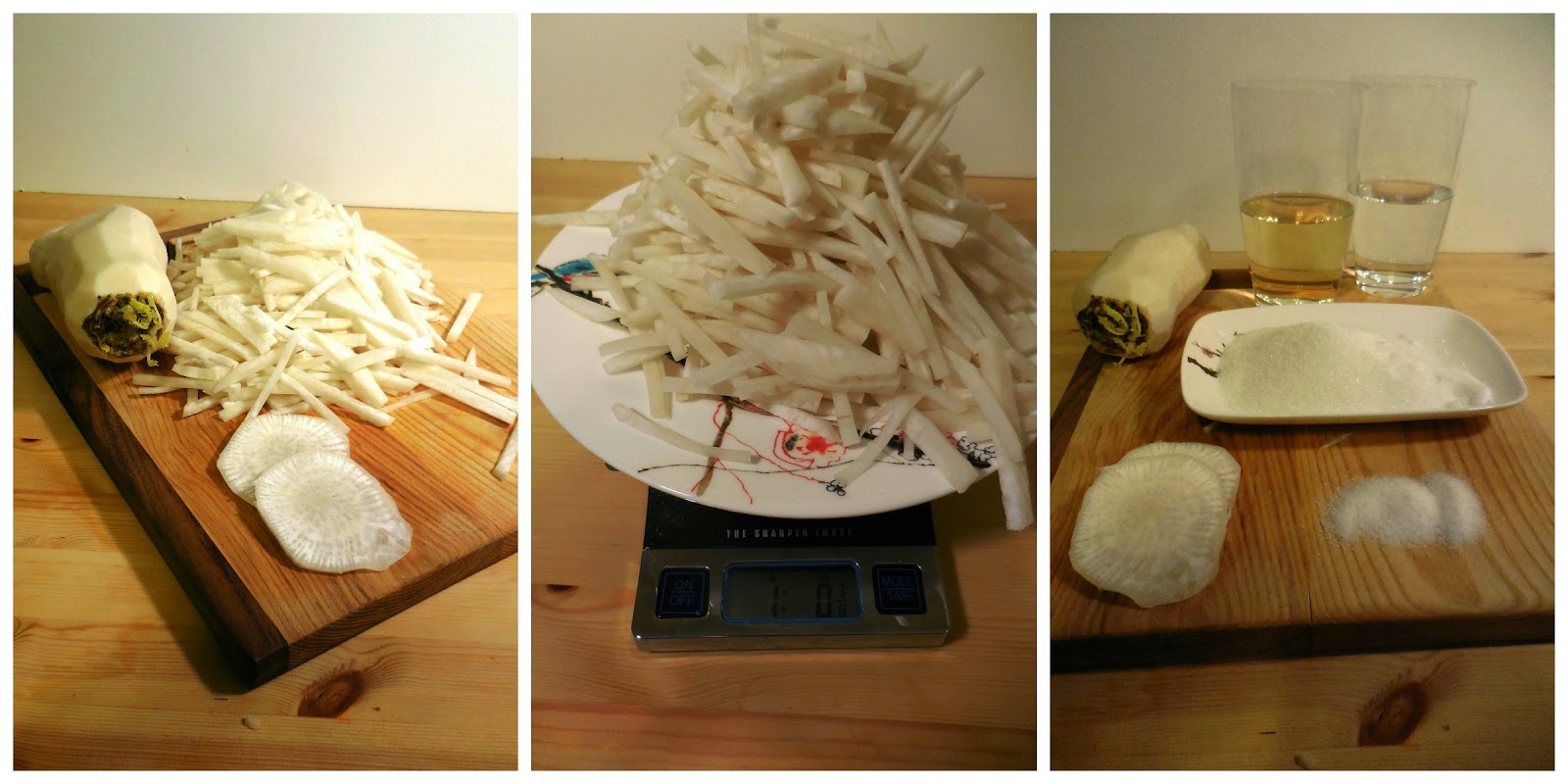무생채
Fair warning you either love or hate MuSangChae I have never met anyone that thinks it's just ok. Also fair warning number two, MuSangChae stinks, you don't really notice it while you are eating it but I have walked into the kitchen a few times while my hubby is eating ramyeon and MuSangChae and had to open a window because.... it smells a bit like farts >.< so there's that for you. Just a fair warning. I love it and eat it with almost every Korean meal I prepare but it is a bit smelly.
Now that you have had your fair warnings....
Here is what you need...
1 Pound of Daikon Radish Julienned
or cut into thin medallions
1 Cup unseasoned Rice Vinegar
1 Cup Water
2 tsp Salt
1 Cup Sugar
Canning jar or sealed glass Tupperware
Here's how you go about doing it...
Wash and Peel the radish and
Julienne or cut into thin medallions. If
you don’t know how to Julienne check this video out
After the daikon is sliced mix
the water, rice vinegar salt and sugar in a small bowl. Be sure to mix well so all the sugar and salt
dissolves in the solution.
Place cut daikon in a canning jar
or glass Tupperware.
Pour pickling solution over
daikon, seal jar and refrigerate.
MuSangChae will keep for a month
or more refrigerated. Toss it once the
pickling solution starts to turn yellow or brown.
*Serving
Suggestions: MuSangChae
really goes with everything. It is extra
good in NangMyeon (cold noodles) and the medallion cut is perfect when eating
SamGyupSal (Unseasoned grilled Pork belly)
I will have recipes for both up some time soon so be sure to check back
to see how to use your freshly made MuSangChae.
*Additional Notes: MuSangChae
is best eaten 24 hours after making to ensure the radish is seasoned. However if you are in a rush it is good 2-4
hours after sitting in the fridge as well.
Be sure to use Unseasoned Rice
Vinegar, if you buy regular rice vinegar it will already have some salt and
maybe sugar in it so your measurements will have to be adjusted accordingly. Read the ingredients list on the bottle, you
only want it to contain rice vinegar and water.


































